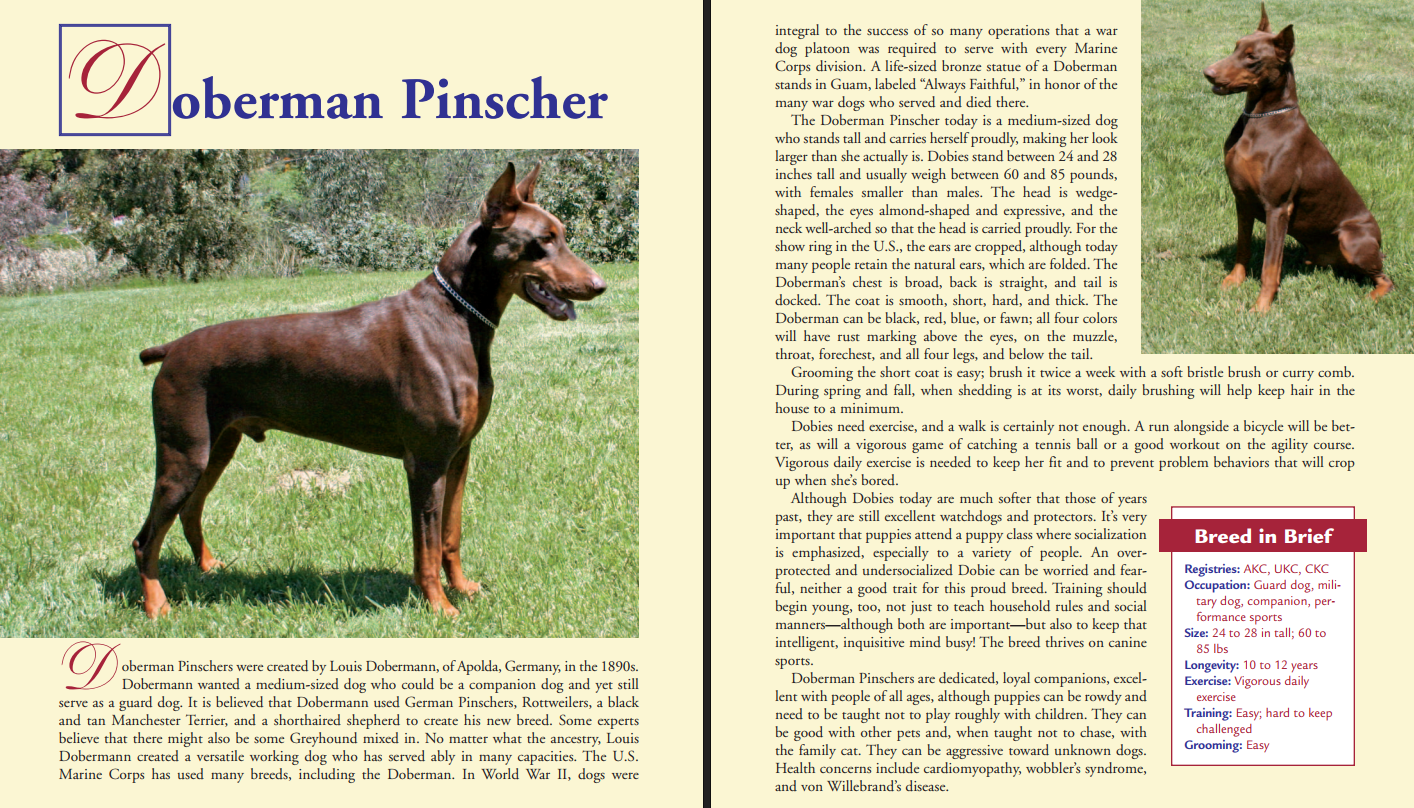The Doberman Pinscher, often simply referred to as the Doberman, is a striking and intelligent breed renowned for its loyalty, alertness, and versatility. Originally bred in Germany by Karl Friedrich Louis Dobermann in the late 19th century, these dogs were developed to be fearless protectors and loyal companions.
Origins and History
The history of the Doberman Pinscher traces back to the 1890s in Germany, where Karl Friedrich Louis Dobermann, a tax collector and dog catcher, sought to create a loyal guardian dog that could also accompany him on his rounds. He selectively bred several dog breeds, including the Rottweiler, German Pinscher, and Greyhound, to achieve the distinctive traits of the modern Doberman.
Characteristics and Appearance
Physique: Dobermans are medium to large-sized dogs with a sleek, muscular build that exudes strength and agility. They typically stand between 24 to 28 inches tall at the shoulder and weigh 60 to 100 pounds, with males being larger than females.
Coat: Their short, smooth coat comes in four primary colors recognized by kennel clubs: black, red, blue, and fawn. They often have rust-colored markings on their muzzle, chest, legs, and eyebrows.
Temperament: Known for their alertness and intelligence, Dobermans are fiercely loyal and protective of their families. They are naturally wary of strangers, making them excellent watchdogs. With proper socialization and training, they can also be affectionate companions and gentle with children.
Versatility and Working Abilities
Dobermans excel in various roles due to their intelligence and trainability. They have served as police and military dogs, search and rescue dogs, therapy dogs, and competitive obedience and agility champions. Their versatility makes them highly sought after in both working and companion roles.
Care and Training
Exercise Needs: Being active and energetic dogs, Dobermans require regular exercise to maintain their physical and mental well-being. Daily walks, playtime, and mental stimulation through training sessions are essential.
Training: Early socialization and obedience training are crucial for Dobermans to channel their protective instincts appropriately. Positive reinforcement methods work best with this breed, as they respond well to praise and rewards.
Health Considerations
While generally healthy, Dobermans may be prone to certain genetic health conditions, including hip dysplasia, dilated cardiomyopathy (a heart condition), and von Willebrand’s disease (a blood clotting disorder). Regular veterinary check-ups and a balanced diet can help mitigate these risks.
Conclusion
The Doberman Pinscher stands out as a breed that combines elegance with utility, making it a beloved choice for both families seeking a loyal companion and professionals needing a reliable working dog. Their intelligence, loyalty, and protective nature continue to make them a popular breed worldwide.





